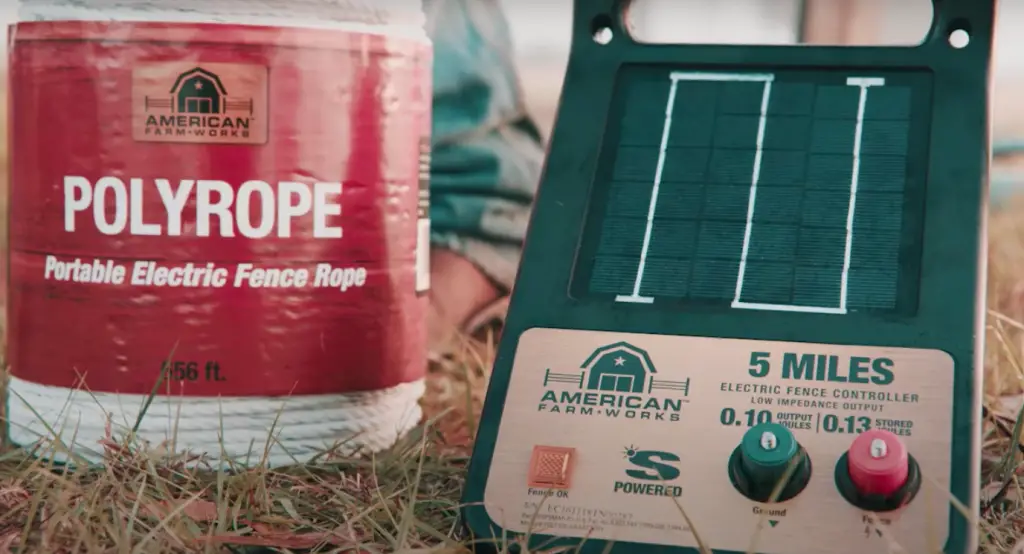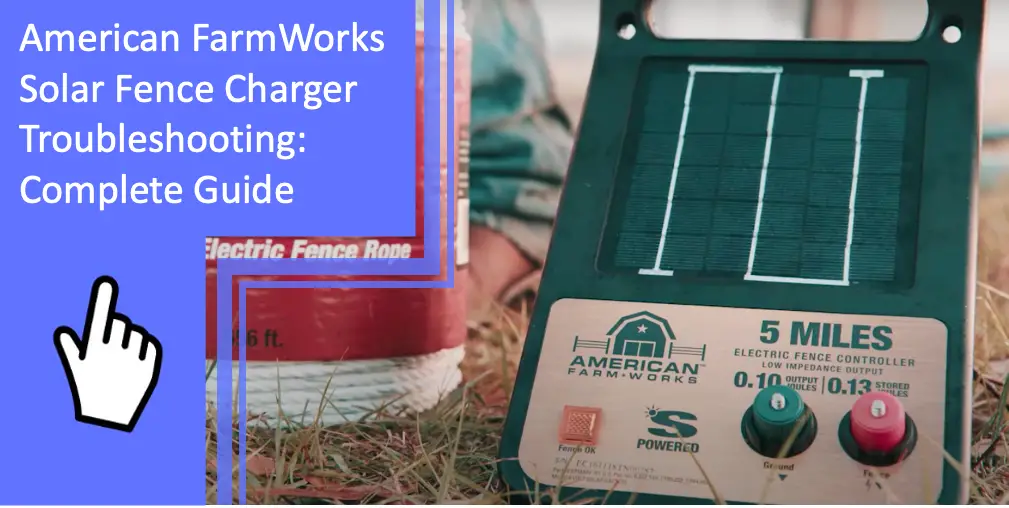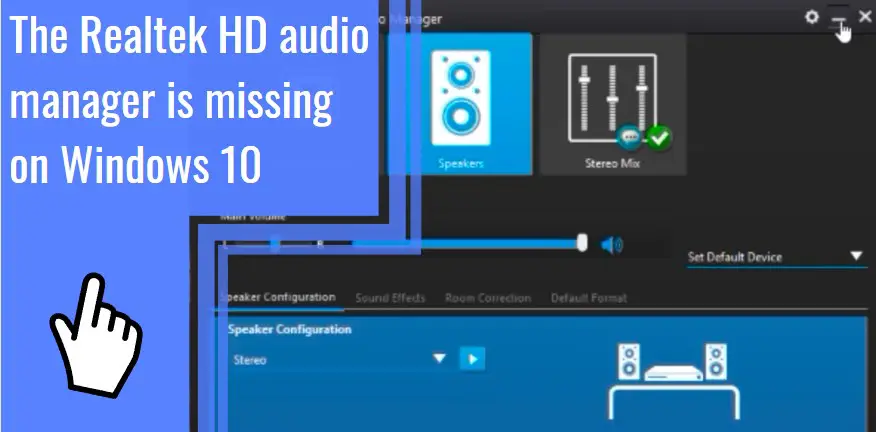What you find on this page:
American FarmWorks Solar Fence Charger electrifies fences without access to electricity using solar technology, making them a perfect option for remote locations and large areas.
The fence charger is suitable for a wide range of livestock including cattle, horses, pigs, and goats. The fence is available in 2-mile, 5-mile, 10-mile, and 20-mile sizes from 0.04 to 0.25 joules.
American FarmWorks Solar Fence Charger is simple to set up and has a three-year limited warranty covering lightning damage. Don’t forget to take care of your American FarmWorks charger warranty registration. The solar fence charger is widely available at Tractor Supply Co.
Below are the most common problems with the American FarmWorks Solar Fence Charger and how to fix them.
American FarmWorks Solar Fence Charger Troubleshooting: Problems With Solutions
Prolonged exposure to the elements can have a negative effect on your electrified fence. In many cases, your electric fence issues can be troubleshot and fixed on your own. However, you may have to reach out to the manufacturer or an electrician for more severe problems.

The Charger Controller Is Not Working
If the monitor on your controller is unresponsive, remove and unplug the battery for ten minutes. Reattach the battery.
Please note that your charger controller must charge in direct sunlight, unplugged from the fence and grounding wires, for at least three days before it is operational. The battery holds power for approximately three weeks without sunlight.
Before trying anything else, check the American FarmWorks electric fence controller manual to check that you’re doing everything right.
Light Flashing
The LED lights on your charge controller cycle through the light colors when it powers up. Flashing lights do not indicate a problem with your charger.
The charger Is Not Working
There are a number of reasons your electric fence charger is not operational.
Disconnect your charger from the battery and disconnect the ground and fence wires. Reattach the charger to the battery and touch the metal bolts of the ground and fence terminals with the ground and fence prong from an electric fence tester.
If the electric fence tester reads less than 2000 volts, you may need to call an electrician or replace the unit.
To test the battery’s health, press the ‘Test’ button on your controller. A green LED light indicates that the battery is fully charged and healthy. A yellow LED light indicates a partial charge (still in working order but not fully charged).
A red LED light indicates that the battery needs attention and battery voltage is low. Make sure that the solar panel is clear of debris. If your solar panel can be adjusted, reorient it for better exposure to the sun.
Continue monitoring the battery’s health. If a red light continues or if you lose power to your fence, your battery may need to be replaced.
Charger Is Not Clicking
An operational fence will make a faint clicking sound. This is the sound of electricity coursing through your fence. If your charger and fence are not clicking, it may not be issuing electricity as it is supposed to.
Check the charger and battery using your electric fence tester as described above.

The charger Is Clicking But Not Working
If electricity is coursing through the charger but not working, it may not be properly connected to your fence.
Make sure you have two grounding poles ten feet apart at approximately six feet deep into the soil. For best results, the soil should be moist, not arid.
The Charger Is Not Shocking
If there is adequate power in your charger but the fence is not shocking, you may have problems with the power setup.
Unplug your charger from the battery and disconnect the grounding and fence wires, then examine the length of your fence for any gaps in the circuit. An interrupted line may be failing to provide power for the length of your fence.
High brush along the bottom of your fence or fallen branches over the top of the fence may also be interrupting the power supply.
Your fence line may also be too long for the charger you purchased. Be sure to measure your fence line before purchasing.
Test and Repair American FarmWorks Solar Fence Charger
Once you have identified the problem, consider the following to better understand the repair process.
Tools You Are Going To Need
You will need an Electric Fence Tester to measure the power coming from your charger.
You may also need
- A battery tester
- Regular, Phillips Head and Torx screwdrivers
- Spare insulators
- Wirecutters
- Ratchet set
OHMs
An ohm represents the electrical resistance that exists between two conductors. The relationship between resistance and the charger’s output is negative. Higher ohms (resistance) will cause a lower charger output. If your fence has a high resistance, it will discharge a weak shock.
If you’re thinking “my electric fence is weak,” you should use wire with low resistance for the best results.
Keep in mind that your animals have their own resistance. Larger animals are more resistant to electricity and therefore will receive less of a shock at the same voltage than smaller animals.
Output Secondary
Shocks from electric fences are caused when an animal touches the fence wire and the earth simultaneously, creating a complete circuit. The electricity passes through the animal, into the soil, and back to the ground rods, which are connected to the fence energizer.
Diodes
A diode is a semiconductor device that serves as a one-way switch for current.
You can buy a diode tester to effectively manage the voltage of your fence.
Put It Back Together
Once you’ve completed your maintenance, it’s time to put your charger back together. Connect your grounding wires and fence wires back to their respective terminals. Reconnect the battery to the charger. Power should now be flowing through your fence.
Conclusion
Now you have all the information you need to repair your solar fence charge. Read the information and try to follow the steps carefully. If you still have question, please contact our team, we will be glad to assist you. Leave a comment below or contact us directly on our email.

Frequently Asked Questions
We’ve gathered the most frequent questions about this topic. Check out the answers.
A faint clicking sound issuing from your electric fence is a good sign. It means that electricity is properly traveling the length of your fence and will provide a shock to your livestock.
The clicking is also a useful deterrent to people who may unknowingly approach the fence. However, you should also have signs posted to prevent injury.
You will need an electric fence tester to measure the power issued from your device.
With the battery plugged into the charger, touch the metal bolts of the ground and fence terminals with the ground and fence prong from an electric fence tester.
Your electric fence charger may not be working because of a dead battery, faulty charger, or poor connection to your fence.
For a complete list of issues and their solutions, see the above section, “American FarmWorks solar fence charger troubleshooting: Problems with Solutions.”
Over time, your battery may stop holding its charge and need to be replaced. The American FarmWorks solar fence makes this process easy.
The battery can be easily removed from the back of the charger. Disconnect the wires from the charger and replace with the new battery.
The charger flashes a light to indicate that power is on and traveling through the fence. There is no need to be alarmed, as the flashing light means your fence is working.
More related content
How to Troubleshoot an LG Air Conditioner Problem?
Arrow electric staple gun troubleshooting guide
Cell Phone Booster without outside antenna: Get the best troubleshooting guide






